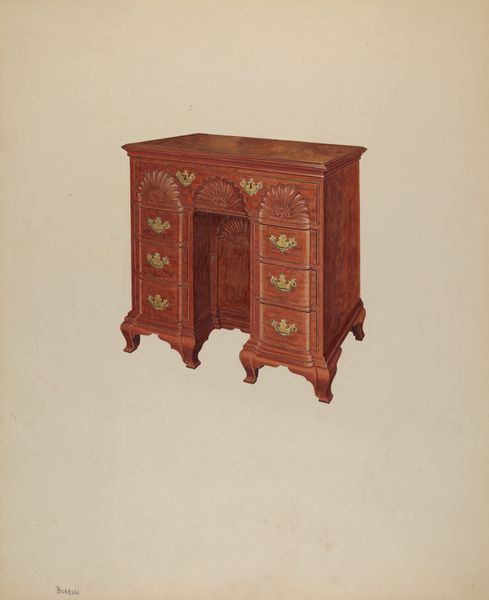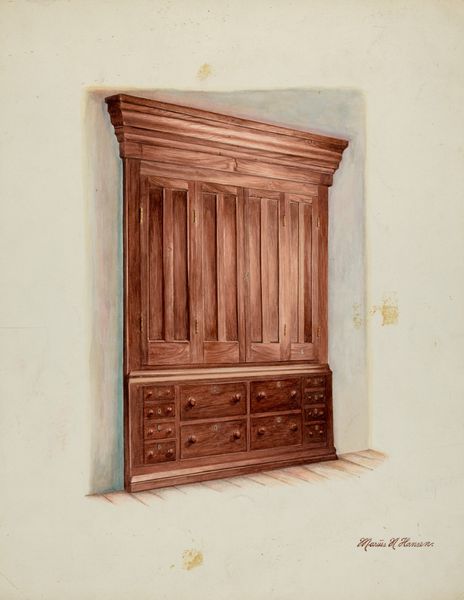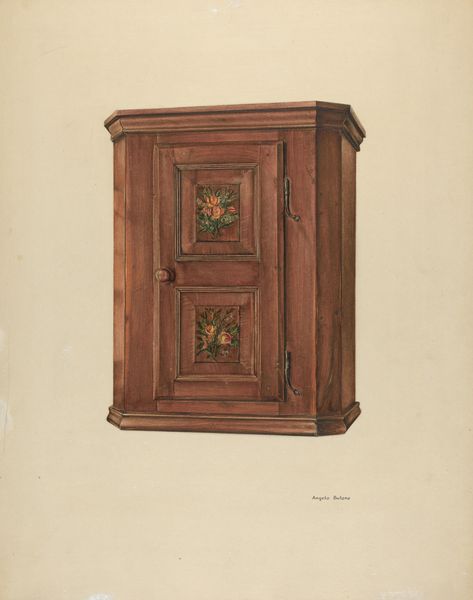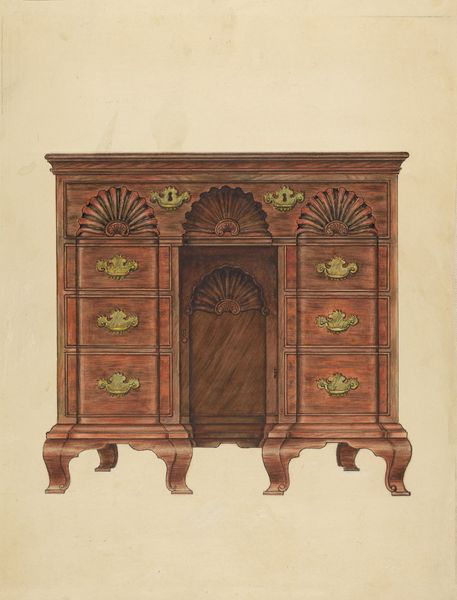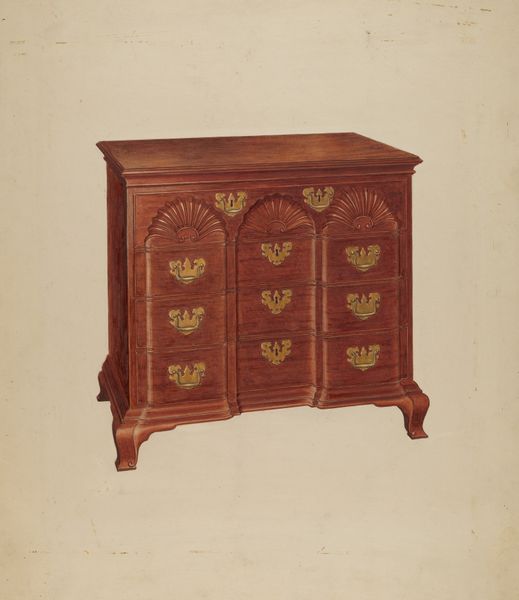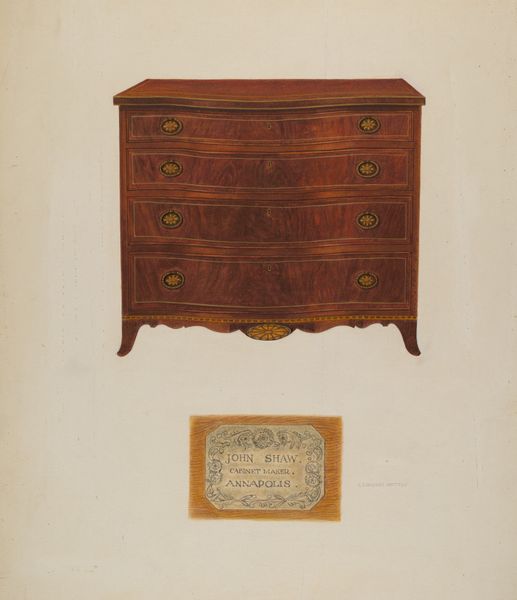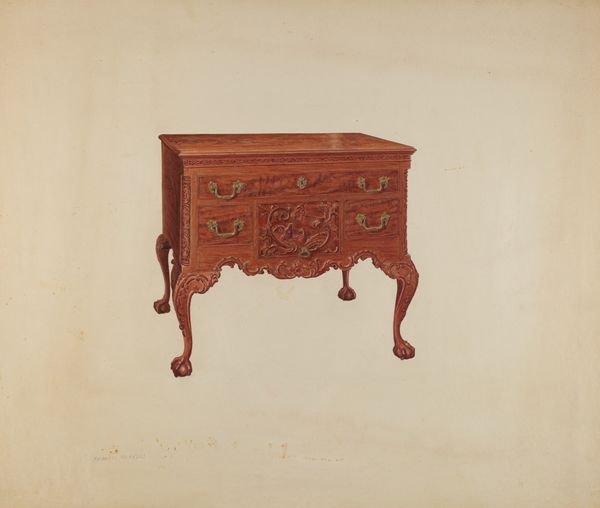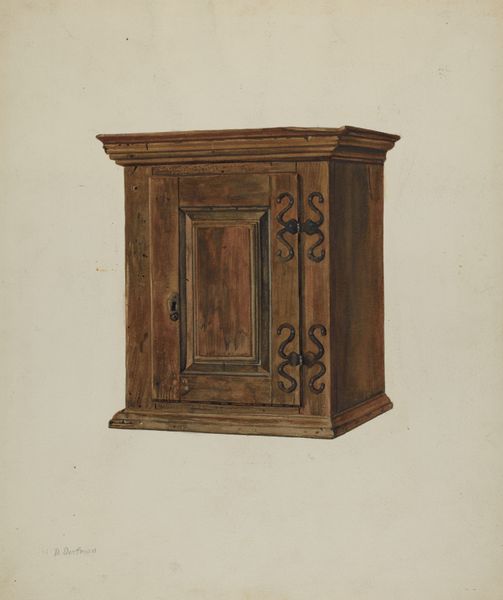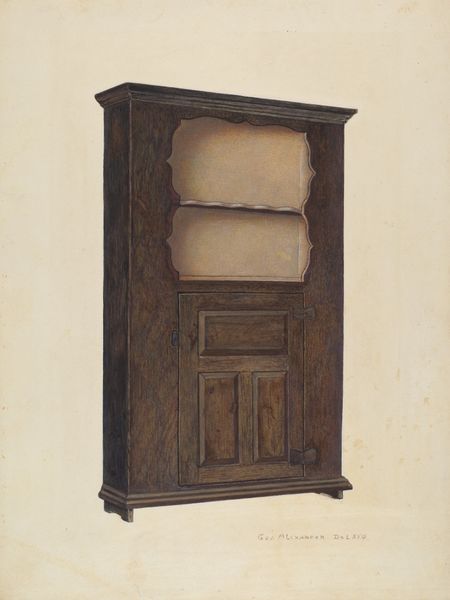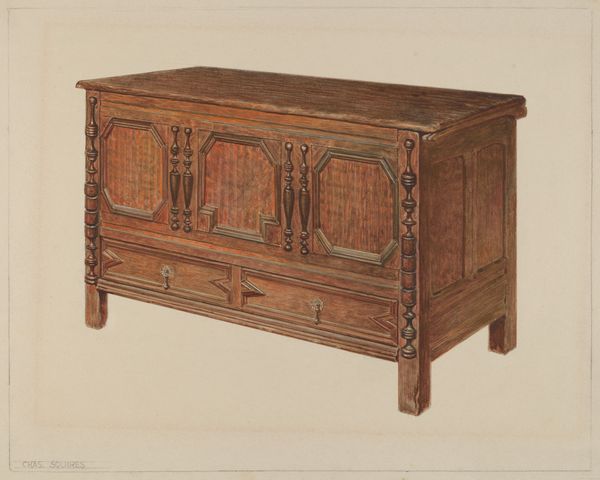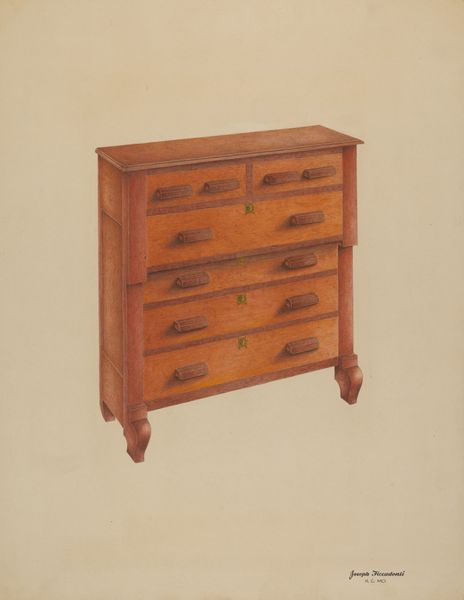
drawing, watercolor, pencil
#
drawing
#
water colours
#
figuration
#
watercolor
#
stoneware
#
underpainting
#
pencil
#
academic-art
#
watercolor
Dimensions: overall: 27.9 x 36.1 cm (11 x 14 3/16 in.) Original IAD Object: 39 1/2"high; 41"wide; 18 1/2"deep
Copyright: National Gallery of Art: CC0 1.0
Editor: So, this is Alvin Gully's "Block Front Chest of Drawers" from 1936, rendered in watercolor and pencil. I'm struck by how realistic it is, almost like a photograph, yet there's a certain warmth that comes through. What can you tell me about it? Curator: It's more than just a realistic depiction; it’s a social artifact. Consider the date, 1936, in the throes of the Great Depression. This chest represents an aspirational object, referencing a more opulent past. How does it reflect anxieties of class and economic stability through a representation of domestic space? Editor: So, it's not just about the chest itself, but what it represents to the artist and perhaps to the society around him? The kind of wealth that felt perhaps more and more removed... Curator: Precisely. The very act of meticulously rendering this object, the implied labor in the craft itself, can be read as a commentary on the changing values and economic precarity. Look closely at the details – how would you interpret those shell carvings? Do they signify status? Heritage? Editor: I guess I hadn't thought of it that way. They seem like ornamentation, but maybe they are communicating something more intentional...a yearning for what came before? I can see how an embrace of simpler forms perhaps was viewed differently in this particular time. Curator: And consider the gendered space this object typically occupies - the domestic sphere. Is there a commentary here, however subtle, on gender roles and expectations? Perhaps it reflects an attempt to reclaim tradition within a transforming society. How does viewing such an object in today’s social climate challenge our assumptions about gender and domesticity? Editor: This makes me realize how much I usually separate art from its historical and social context, and what insights I'm missing when I do that. Curator: Exactly! Seeing art as a product and producer of social forces opens up whole new ways of interpreting it.
Comments
No comments
Be the first to comment and join the conversation on the ultimate creative platform.

